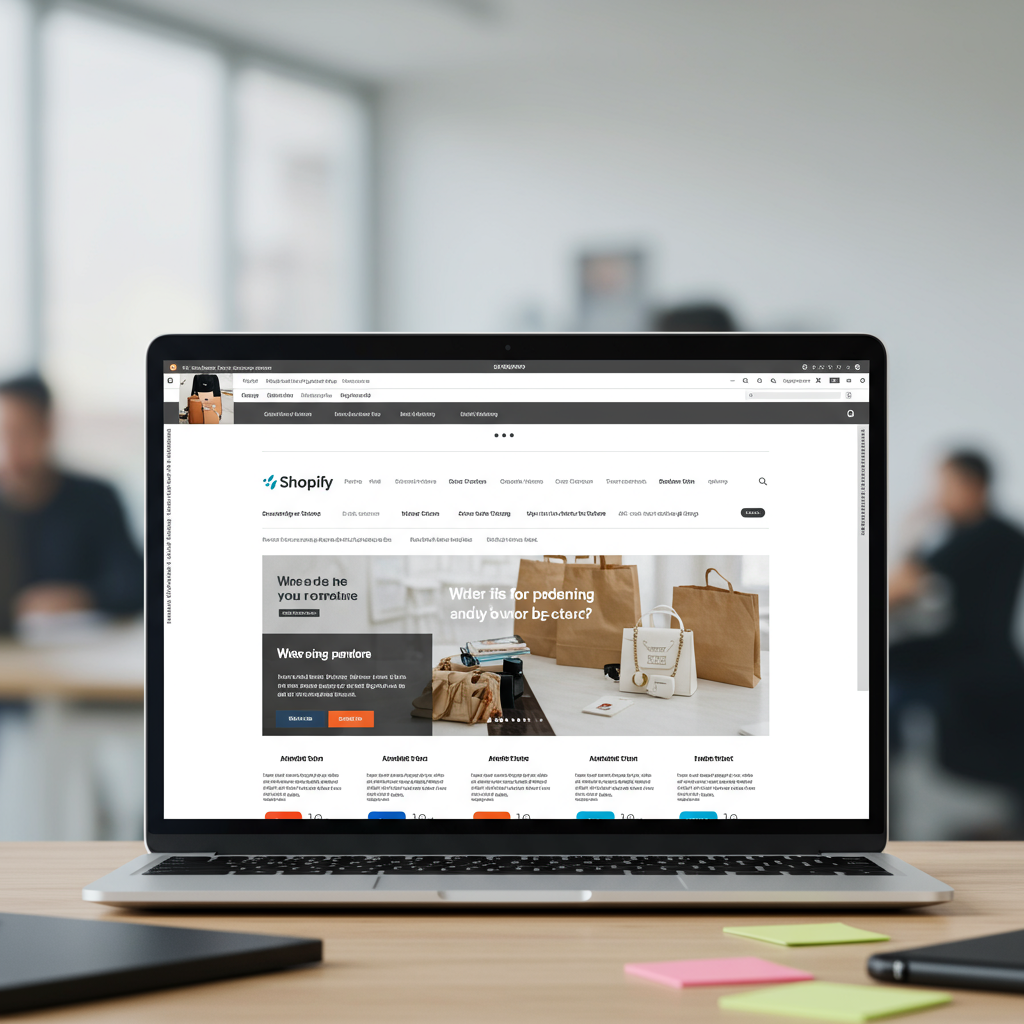Transform your online storefront into a conversion powerhouse with these forward-thinking strategies for the coming year.
Hello fellow Shopify merchants! As we look ahead to 2025, the digital landscape continues to evolve at an incredible pace, presenting both challenges and exciting opportunities.
Your Shopify store’s homepage isn’t just a digital storefront; it’s your brand’s first impression, your most powerful sales tool, and the gateway to your entire product catalog.
In this article, I want to share some crucial design tips that will help you optimize your homepage for success in the coming year, ensuring it stands out in a crowded market.
We’re not just talking about aesthetics here; we’re focusing on functionality, user experience, and conversion optimization to drive real results for your business.
The ultimate goal is to create a homepage that not only looks fantastic but also guides your visitors seamlessly towards making a purchase, fostering loyalty along the way.
First and foremost, let’s talk about the hero section. This is the very first thing your visitors see, and it needs to grab their attention instantly and communicate your value.
For 2025, consider dynamic, high-quality video backgrounds or interactive elements that showcase your products in action, creating an immersive experience.
Your main headline should be clear, concise, and immediately communicate your unique selling proposition (USP). What problem do you solve? What makes you different?
Below the headline, a compelling call-to-action (CTA) button is essential. Make it stand out visually and use action-oriented language like “Shop Now,” “Discover Our Collection,” or “Get Started.”
Next, navigation. A cluttered or confusing navigation menu is a surefire way to lose potential customers before they even begin to explore your offerings.
Ensure your main menu is intuitive, logically organized, and easily accessible, especially on mobile devices where screen real estate is limited.
Consider mega-menus for larger inventories, but keep them clean, visually appealing, and easy to scan to prevent overwhelming your visitors.
Product highlights are critical. Don’t just list products; curate them. Showcase your best-sellers, new arrivals, or seasonal collections prominently on your homepage.
Use high-resolution images and concise, enticing descriptions that encourage visitors to click through for more details and add items to their cart.
In 2025, personalization will be key. Leverage Shopify apps or built-in features to display personalized product recommendations based on browsing history or popular items.
This AI-driven approach can significantly enhance the user experience, making visitors feel understood and boosting your conversion rates.
Social proof remains incredibly powerful. Integrate customer reviews, testimonials, or user-generated content directly onto your homepage to build trust.
Seeing that others trust and love your products builds immediate credibility and encourages new visitors to take the plunge and explore your brand.
Think about incorporating a dedicated section for customer testimonials or a live feed of recent purchases (if appropriate for your brand and privacy policies).
Mobile-first design is no longer optional; it’s mandatory. A significant portion of your traffic will come from mobile devices, so optimize for them first.
Your homepage must be fully responsive, loading quickly and looking flawless on any screen size. Test it rigorously on various devices and browsers.
Page speed is another non-negotiable. Slow loading times lead to high bounce rates and frustrated customers who will quickly abandon your site.
Optimize your images, minimize unnecessary code, and consider using a content delivery network (CDN) to ensure your homepage loads in a flash.
Don’t forget about search engine optimization (SEO). While the homepage isn’t typically optimized for specific product keywords, ensure your meta title and description are compelling and include your brand name.
A well-designed footer is also important. Include links to customer service, FAQs, shipping information, privacy policy, and social media channels.
This builds trust and provides easy access to essential information without cluttering your main navigation, improving overall user experience.
Consider adding a blog section or recent articles snippet to your homepage. This positions you as an authority in your niche and provides valuable content for your audience.
Finally, embrace accessibility. Ensure your design is usable by everyone, including those with disabilities, by using clear fonts, sufficient color contrast, and alt text for images.
Regularly A/B test different elements of your homepage – headlines, CTAs, image choices – to see what resonates best with your audience and drives conversions.
The digital world is dynamic, and your homepage should be too. Continuously analyze your analytics and adapt your design based on user behavior and emerging trends.
By focusing on these design principles, you’ll create a Shopify homepage that not only attracts visitors but converts them into loyal customers in 2025 and beyond.
What do you think about these tips? Are there any other strategies you’ve found particularly effective for your Shopify homepage? I’d love to hear your thoughts!






